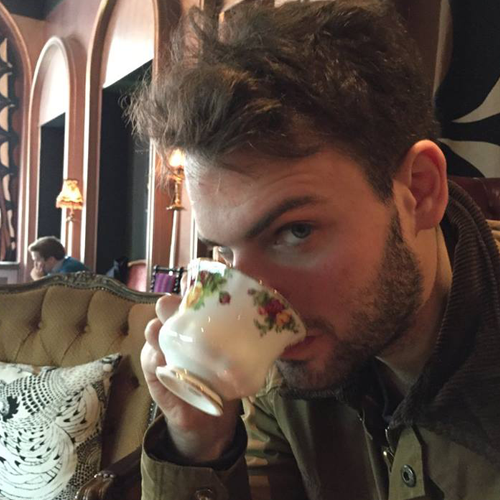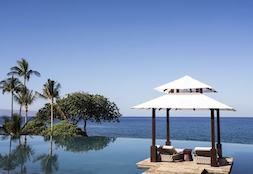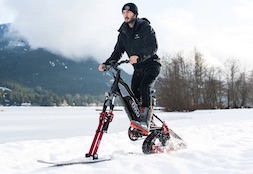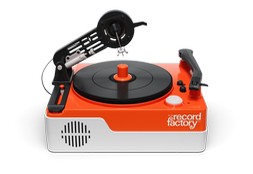Things got weird fast at Wall Drug, the famed tourist attraction/shopping center/hot-beef proprietor in Wall, South Dakota (Pop. 766), when, approaching the cafeteria line, a young woman with a black ponytail told us to check out the BBQ Beef special with a not-so-slight Eastern European accent. Our shock was not that an immigrant would be working at such an American establishment, but that she was working at this American establishment—in the middle of nowhere—that she seemed high-school age, and that her colleagues were all just as young, from places as far flung as Kazakhstan. What, my friend Cora and I wondered, had brought them here? The proximity to Mt. Rushmore? Some perverse work exchange program? The American Dream?
It was the promise of a very different American Dream that’d built the place back in 1931, when Ted Hustead bought Wall’s sole drug store with the inheritance left to him by his father. And it was a singularly American knack for self-promotion—initially, a small billboard advertising free ice water to folks on the way to Yellowstone and the newly constructed Mt. Rushmore; later, a seemingly infinite number of billboards dotting I-90 (“YOLO…Wall Drug”; “5 cent coffee…Wall Drug”) and a campaign, beginning with our WWII servicemen abroad, to spread bumper stickers at other tourist attractions delineating just how many miles it would take to get to Wall Drug—that made it into what it is today: a block-long shopping center that takes in over $10 million a year. Leaving, Cora will deem it the Kardashian of tourist attractions. I'll suggest that it is Las Vegas—if the only thing Las Vegas imitated was itself.
After all, Wall Drug is where we pay 50 cents to see a giant robotic gorilla (“Robot Gorilla…Wall Drug”) play a song on a giant robotic piano, where Cora snaps a photo of me on a giant bunny rabbit (“Giant Bunny…Wall Drug”), and where I snap a photo of someone else snapping a photo in front of a smaller, faker, Mt. Rushmore (“Mt. Rushmore…Wall Drug”). In the backdrop are giant silver grain mills overlooking the Sleepy Hollow RV Park smelling of sulfur and citronella. In the foreground there is the head of a small boy, stepping on holes in the ground that shoot up water (“Water Splash…Wall Drug”). Again, we think, this image is America—being the post-modern millennial that I am, I even Instagram it with that very caption. Spend enough time thinking about Wall Drug and you will understand how we might be self-referencing and self-promoting ourselves into a hazy oblivion. As one New York Times reporter wrote, commenting on the framed clippings detailing Wall Drug lore which dot the walls between the gift shops and travel chapel and confectionary and Black Hills Gold jewelers, “the quintessential way to experience Wall Drug seems to be to stand at the wall of clippings reading about people standing at the wall of clippings reading about people standing at the wall."
All tourist attractions, to some extent, have something of this famous-for-being-famous quality, what Don Dellilo, in White Noise, made explicit with The Most Photographed Barn in America. But Wall Drug is not the Eiffel Tower or the Taj Mahal. It is the stop along the way, a thing made famous by its reference to fame, an emblem of our global soft power, of the American Dream lost and found and muddled. There are those, like us, who, after seeing Julie S. from China take our order, Nikole Z. from the Czech Republic serve it, and Nicole S. from Jamaica ring us up, think this makes Wall Drug even more American—in both its absurdist embrace of diversity and those young peoples’ likely disillusionment with our country’s promise. Then there are those who, while waiting for a young Mongolian girl with highlights to call their number, grumble to a spouse, “Why, Goddamit, why can’t they get someone who speaks English here?”
And so we’re left with this picture of America: the land of opportunity, of “opportunity,” of capitalism-qua-kitsch, of gift stores selling t-shirts that say something like, “The Badlands: It’s not about the size, but how many times you rise.” A place built on others who half of us resent, where size matters, where everything is for sale, where we drench our sandwiches in gravy and, perplexed by our freedom, go to the places we’re told to go, stand where we’re told to stand, photograph imitations of what we’re supposed to photograph, and do it all with a smile.






